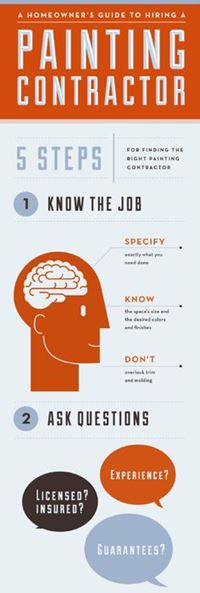Understand Just How Seasonal Problems Affect The Success Of Business Outside Paint And Learn The Optimal Periods To Guarantee Durable Outcomes For Your Project
Understand Just How Seasonal Problems Affect The Success Of Business Outside Paint And Learn The Optimal Periods To Guarantee Durable Outcomes For Your Project
Blog Article
Material Writer-Leach Browne
When you're intending an industrial exterior paint project, seasonal variables can make or break your results. You'll wish to consider exactly how temperature and humidity effect paint application and drying times. Selecting Visit Homepage can guarantee your paint sticks effectively and lasts longer. However which periods are really the best for this kind of job? Allow's discover the crucial elements that can affect your job's success.
The Influence of Temperature Level on Paint Application
When you're planning an industrial external paint task, the temperature can dramatically impact how well the paint sticks and dries.
Preferably, you want to paint when temperatures vary between 50 ° F and 85 ° F. If it's too cold, the paint might not cure effectively, bring about problems like peeling off or breaking.
On the flip side, if it's also warm, the paint can dry out also rapidly, stopping proper bond and causing an uneven coating.
You must also think about the time of day; early morning or late afternoon uses cooler temperature levels, which can be much more desirable.
Always inspect the maker's referrals for the details paint you're utilizing, as they usually supply advice on the optimal temperature array for optimum results.
Humidity and Its Effect on Drying Times
Temperature level isn't the only ecological element that affects your business external painting task; moisture plays a considerable role too. read the full info here can slow down drying out times significantly, impacting the overall top quality of your paint job.
When the air is saturated with moisture, the paint takes longer to cure, which can lead to concerns like inadequate bond and a higher risk of mold development. If you're repainting on a particularly moist day, be gotten ready for prolonged wait times between layers.
It's crucial to keep track of local weather and strategy appropriately. Preferably, aim for humidity levels between 40% and 70% for optimal drying.
Keeping these consider mind guarantees your task remains on track and delivers an enduring finish.
Best Seasons for Commercial Exterior Paint Projects
What's the most effective time of year for your commercial outside painting jobs?
Spring and early loss are generally your best options. Throughout these periods, temperature levels are mild, and humidity levels are typically reduced, developing excellent conditions for paint application and drying out.
Prevent summer's intense heat, which can create paint to dry as well promptly, causing poor adhesion and surface. In a similar way, winter season's chilly temperature levels can prevent correct drying out and curing, running the risk of the longevity of your paint job.
Aim for days with temperatures between 50 ° F and 85 ° F for ideal outcomes. Bear in mind to examine the neighborhood weather prediction for rain, as damp conditions can destroy your job.
Planning around these variables guarantees your painting task runs efficiently and lasts longer.
Final thought
To conclude, preparing your commercial external paint tasks around seasonal factors to consider can make a substantial distinction in the outcome. By scheduling work during the ideal temperatures and moisture levels, you'll ensure much better bond and drying times. Remember to keep Read the Full Document on regional weather report and select the right time of year-- spring and very early loss are your best choices. Taking these steps will help you achieve a long lasting and expert finish that lasts.
